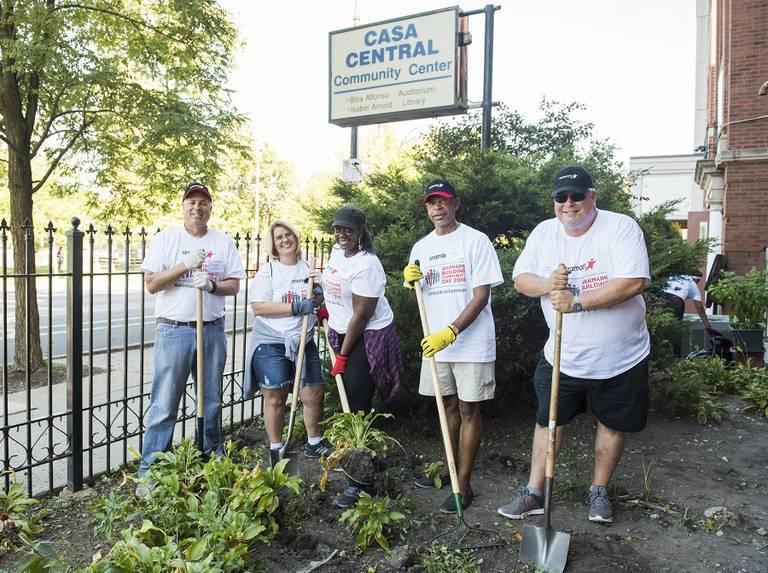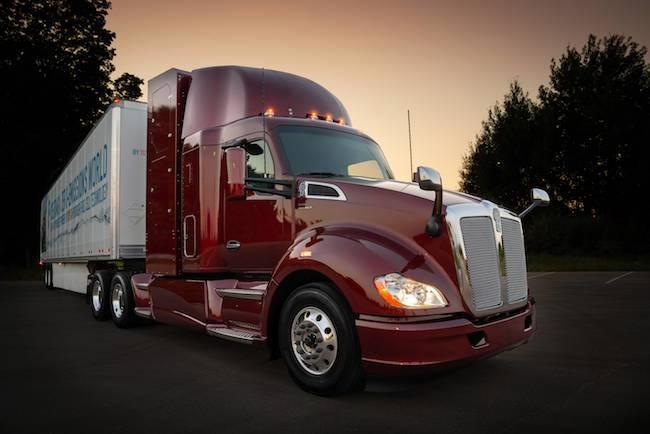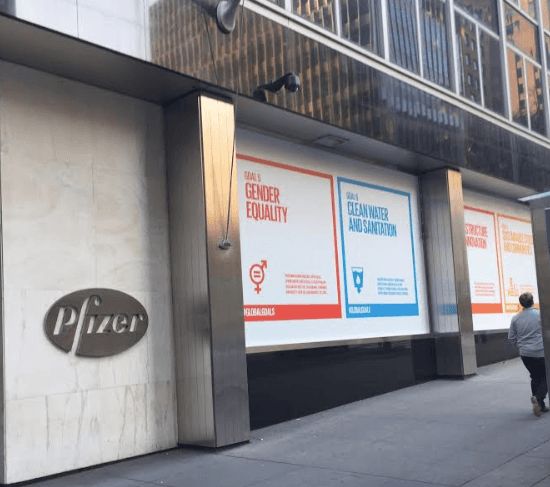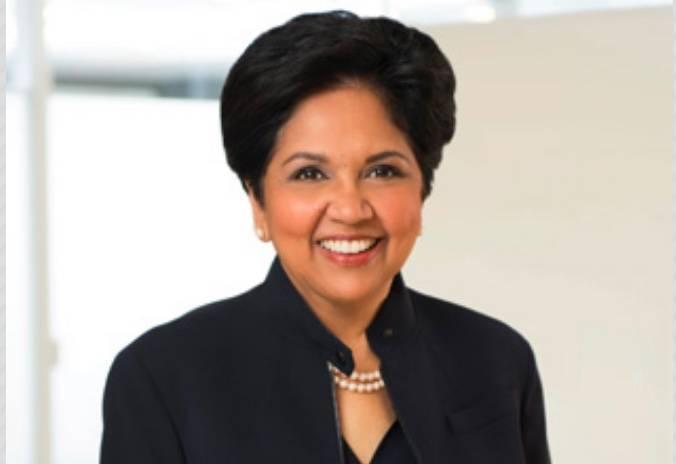For Some Kids, Summer's Not So Healthy When School Lunch Goes Away


It’s August, and we’re well in to the heat of summer. It should be a carefree time for children, but for those who depend on the National School Lunch Program during the school year, summer may mean poor nutrition, even hunger.
Statistics show that less than 20 percent of kids who qualify for free meals during the school year receive free summer meals for a variety of reasons – lack of access to meal sites, insufficient program awareness, and fewer resources when schools are closed. Add in the fact that summer days are often less structured, some children may actually have less physical activity and turn to less healthy foods than they normally would during the school year, so their health and wellbeing can easily suffer.
Local community centers – many that run not only meal programs, but also health and nutrition programs -- are critical to making sure that kids and their families enjoy a summer of wellbeing. They offer a variety of programs from summer meals to nutrition and cooking classes and community gardens where participants can grow their own fresh fruits and vegetables.
At Aramark, we champion community centers that support health and wellness through Aramark Building Community and our Feed Your Potential 365 Clubs.
Aramark Building Community (ABC) is our philanthropic and volunteer program. Through ABC, our volunteers partner with local community centers to inspire families to lead healthy lifestyles and help youth and adults prepare for the workforce.
Several of the centers we partner with also have Feed Your Potential Clubs 365, an extension of our Healthy for Life 20 By 20® initiative with the American Heart Association (AHA), which has the goal of improving the health of Americans 20 percent by 2020.
Feed Your Potential 365 Clubs inspire participants to discover the benefits of a healthier diet. Our talented chefs, registered dietitians and food service managers help facilitate educational experiences developed in partnership with the AHA. They provide knowledge, skills, and confidence in choosing and preparing healthy meals at home:
Our community center partners tell us the clubs are making a real difference.
“This is a program that should be extended to everyone, both young and old, because of the way the participants can learn firsthand from presenters that are experts in their field,” said Anja LeBlanc from Philadelphia’s Federation of Neighborhood Centers.
Ethan Neal, of Pillsbury United Communities in Minneapolis added that “One of the biggest misconceptions people have is that ‘poor’ people don’t care about healthy food. This program… shows unequivocally that that isn’t true…people are truly excited…I’m a true believer in the idea that if children are well fed, they have a much better chance at becoming successful adults.”
But Ethan also notes that without financial support, programs like this “just fall by the wayside,” so at the beginning of 2018 we launched our Feed Your Potential community campaign.
Through the end of the year, for every person who joins our Feed Your Potential 365 campaign to receive tips, recipes and other great information from our culinary experts, we’ll donate $1 to health and wellness programs at community centers like the Federation of Neighborhood Centers and Pillsbury United Communities.
Summer may be coming to an end, but the need for health and wellness programs in our communities continues. Take a minute, join now, and help those in need reach their potential.
Mastercard Commits to Science-Based Emission Targets


Mastercard announced it is the first company in the payments sector to set science-based targets that support the fight against climate change.
Its plan to cut greenhouse gas emissions by 20 percent over the next eight years was approved by the Science Based Targets initiative (SBTi), a partnership between CDP, the U.N. Global Compact, the World Resources Institute and WWF. To be certified by SBTi, company targets must align with the global effort to limit temperature rise to “well below” 2 degrees Celsius.
Climate scientists agree the 2-degree threshold is essential to avoiding the worst impacts of climate change. World leaders wrote it into the landmark Paris climate agreement, but government action isn’t enough to get there. By themselves, national commitments associated with the Paris Agreement will only limit warming to 3.5 degrees Celsius this century, as Oscar-nominated filmmaker Josh Fox pointed out in a 2016 op-ed on TriplePundit. Private sector engagement is needed to fill the gap, which will only widen if the U.S. government sticks to its decision to pull out of the Paris Agreement.
To answer the call, top firms started setting science-based targets in advance of the 2015 U.N. climate talks, where world leaders finalized the agreement, but as of this year Mastercard joins fewer than 125 other companies to have their targets approved by SBTi. Its 20 percent goal uses a 2016 baseline and includes direct and indirect emissions, as well as those generated by electricity the company purchases.
“Being the first payments company to align their business strategy with the Paris Agreement, Mastercard is demonstrating its business leadership and positioning itself for success in the low-carbon economy,” Cynthia Cummis, director of private-sector climate mitigation at the World Resources Institute, said in a statement.
Mastercard achieved 100 percent renewable energy offset usage across all of its global offices last year, through a combination of on-site solar, renewable energy purchases and credits. The company said it will pursue green certification for future construction projects to further reduce direct emissions. All of its owned office campuses are already LEED certified.
For indirect emissions—by far the largest share of the company’s overall footprint—Mastercard dedicated a team to help global suppliers to quantify and reduce GHGs.
“Climate change is one of the biggest challenges of our time,” Kristina Kloberdanz, Mastercard’s chief sustainability officer, said in a statement last month. “This commitment highlights Mastercard’s determination to be a part of the solution.”
Mastercard first announced plans to pursue science-based targets at the start of this year—a move praised by Trillium Asset Management. “This target will propel the company to meaningful emissions reductions that are necessary for the planet, while also generating bottom line benefits,” the socially responsible investing firm predicted in January.
Trillium and the sustainability arm of Loring, Wolcott & Coolidge have been in talks with Mastercard since a 2016 shareholder proposal that called on the company to adopt time-bound emissions targets. Data increasingly shows that such targets are good for business as well a the environment: Companies with GHG reduction goals achieve an average of 9 percent better return on investment compared to their peers that do not, according to research from WWF and CDP.
SBTi-approved companies, which include the likes of Ikea, Unilever and Procter & Gamble, are already seeing the results. Nearly a third of companies with verified science-based targets reported bottom-line savings as a result of their GHG goals, according to a recent SBTi survey. One in five of these firms’ executives expect all of their company’s products and services to be low-carbon by 2028—a finding Dexter Galvin of CDP called “remarkable” and indicative that a “tipping point is in reach.”
Image credit: Mastercard
Three More Signs the Hydrogen Fuel Cell Ship -- or Truck -- Has Sailed


The dream of a global economy fueled by zero emission hydrogen has been met with waves of skepticism. Nevertheless, major auto manufacturers and other stakeholders have continued to forge ahead, and the latest batch of developments is further proof that the dream is edging closer to reality.
1. Hydrogen takes to the road
For those of you new to the topic, liquid hydrogen is known as a rocket fuel, but that's not a particularly practical for earthbound purposes.
For use in vehicles, hydrogen is typically deployed in a fuel cell, which generates electricity through a chemical reaction with oxygen.
The electricity is used to run a generator, so essentially hydrogen fuel cell vehicles are electric vehicles, just like their battery-operated cousins.
One indicator of fuel cell progress involves the different types of the hydrogen vehicles breaking into the market. Here in the U.S., passenger cars have been slow to get off the ground, partly due to cost and partly due to a lack of fueling stations.
In contrast, fuel cell forklifts are beginning to catch on quickly. Warehouse operators find that fuel cells offer the same zero emission, near-silent operating benefits as battery-powered forklifts but with far quicker turnaround time for refueling.
Similarly, trucks could be the next breakthrough, including pickups, delivery vans and semis. UPS is one example. Another is the startup fuel cell semi company Nikola, which recently announced a commitment from Anheuser-Busch for an order of up to 800 hydrogen fuel cell trucks.
Toyota is also deeply invested in fuel cell technology, and just last month the company introduced its new Beta fuel cell semi truck.
Beta is a longer-range version of the Alpha truck launched by the company last year, as part of its efforts to achieve zero emissions throughout its operations at the Port of Long Beach, in California.
2. H2 fuel for a global economy
One key barrier to a sustainable hydrogen economy is the source. Hydrogen is an abundant fuel but it does not have a standalone existence in nature. Currently, most H2 is sourced from natural gas.
Various renewable alternatives are beginning to emerge, such as using landfill gas or biomass, or "splitting" hydrogen from water using an electrical current generated by wind or solar power.
These solutions could be widely applied to generate H2 at or near fueling stations, depending on available resources.
That still leaves the problem of transporting bulk H2 to locations where on-site production is not feasible. It is impractical to transport hydrogen gas without compressing it, and compression involves a great deal of technological gymnastics and, consequently, a great deal of expense.
Earlier this week Australia's CSIRO (Commonwealth Scientific and Industrial Research Organisation) announced one important new development on that score. Instead of transporting bulk H2, CSIRO proposes a system that takes advantage of existing infrastructure for transporting bulk ammonia.
CSIRO's breakthrough involves a new membrane that can be used to separate high-purity hydrogen from ammonia at the point of use.
As for the ammonia, that is beginning to jump on the same futuristic track as hydrogen. Conventional ammonia production is based on a century-old process that is not sustainable, but renewable alternatives are beginning to emerge.
3. On beyond fuel cell vehicles
The U.S. Department of Energy is an enthusiastic backer of the hydrogen economy. The agency has been focusing on fuel cell vehicles, and earlier this month it expanded its "H2@Scale" initiative to leverage the interplay between hydrogen production, power generation and energy storage.
That's not all good news for renewable energy. The new initiative is partly aimed at demonstrating that nuclear and coal power plants can be more economically competitive in the world of low-cost renewables. The idea is that excess, off-peak capacity could be deployed for hydrogen production.
On the plus side, the Energy Department is also aware of the potential for bulk hydrogen production and storage to help integrate more wind and solar energy into the grid:
"The H2@ Scale initiative is looking at ways that hydrogen can help make nuclear and fossil baseload plants more economical, and increase the flexibility and utilization of variable resources like solar and wind . . . Greater use of all of our domestic energy resources increases the nation’s energy security and resiliency."
The Department of Energy is actively seeking information on large scale production and multi-sector uses for hydrogen, so if you have any ideas get them to the agency by October 31 and keep the mission in mind:
Through this initiative, the DOE aims to incentivize the research and development (R&D) of transformational technologies that reduce the cost of hydrogen production and distribution technologies, diversify the feedstocks available for affordable hydrogen production, enable new end uses of hydrogen, enhance the flexibility of the electric power grid, reduce emissions through novel uses of affordable hydrogen, generate jobs in growing industries, and provide global technology leadership for export of next-generation energy solutions.
Meanwhile, in terms of scaling up, it seems that Toyota is already one step ahead of the game. Its plans for the Port of Long Beach include a facility that the company is billing as the "first megawatt-sized carbonate fuel cell power generation plant with hydrogen fueling in the world."
With support from the Energy Department and other partners, the new Toyota facility is designed to take in agricultural waste and convert it to water, electricity and hydrogen for use at the port.
Photo: via Toyota.
What New EPA Rulings on Asbestos Mean for Consumers and Business


Despite the fact that asbestos has been known as a hazardous material since the 1970s, being both a known carcinogen and the cause of mesothelioma, the material has never been subject to an outright ban in the USA - unlike in around 50 other countries, including all of the European Union, where this dangerous product has been completely outlawed.
Several attempts to ban asbestos have been made in the U.S. since the 1970s, and of these Asbestos.com - an advocacy group for mesothelioma sufferers - cites the 1989 EPA-issued Asbestos Ban and Phase-Out Rule to have been the best attempt to impose a full ban. However, this was overturned by a 5th circuit court in 1991.
At the time of the court’s decision, George H. W. Bush’s EPA didn’t appeal the ruling, though a provision was granted allowing that asbestos products that were not being manufactured, processed or imported on July 12, 1989 would be subject to the ban.
One of those provisions stipulated by the EPA was that new uses of asbestos would be banned.
In June of this year, the EPA released a new proposal called the “Significant New Use Rule” (SNUR) for asbestos. NBC reports this proposal itself was subsequent to an Obama-era amendment to the 1976 Toxic Substance Control Act, which requires the EPA to reevaluate harmful toxic chemicals on an ongoing basis.
Critics of SNUR say that the proposed EPA ruling (drafted under Scott Pruitt’s tenure) should have been the opportunity to ban asbestos outright, but it instead opens up the possibility for new uses to emerge, though these must be individually approved by the EPA on a case-by-case basis. In addition, in a win for chemical industry lobbyists, as reported by NBC, the EPA now bases its toxic chemical analysis on the harm caused by direct contact in the workplace, while not taking into full account improper disposal or other means of contamination which could affect the public.
The EPA counters that SNUR tightens the law, asserting that many uses of asbestos that are still legal, would in future be outlawed under SNUR. In this CNN piece, EPA scientist, Nancy Beck, affirms that the agency took the approach of evaluating grandfathered exceptions, determined which are no longer in use, and worked to close the loophole. This fact sheet from the EPA website notes potential market uses (such as roofing felt) that will be prevented under SNUR, with a footnote indicating that these uses existed in 1989, were not previously banned, and for which the SNUR will prevent market re-entry.
From a business perspective, asbestos related lawsuits for mesothelioma sufferers has resulted in plaintiff settlements running into the millions of dollars per claim, so already the market for asbestos in the USA has contracted hugely over the last several decades.
This has compelled industry to find alternatives to asbestos in practically every application, but most notably in construction, where its fireproofing properties were highly valued. From a manufacturing perspective, the USA mines no asbestos as a raw material. The U.S. Geological Survey (USGS) states the last U.S. producer of asbestos ceased operations in 2002 as a result of the decline in domestic and international asbestos markets associated with health and liability issues.
Add to this the backlash against chemical companies selling dangerous products to consumers, it’s hard to imagine asbestos finding itself back into the consumer retail market, when the major hardware stores are finding themselves compelled to take action of their own to take harmful products off their shelves.
To provide some perspective of the material’s decline, USGS statistics show that United States consumption has fallen from 803,000 tons in 1973 to just 300 tons in 2017. They also detail that the chloralkali industry accounts for “nearly all domestic consumption” of asbestos. In this application, asbestos is used to make semi-permeable diaphragms to prevent the mixing of chemicals during the manufacture of chlorine.
So this kind of begs the question, why does the EPA need to keep the doors open for applications for new uses of asbestos? Pretty much the only good development here is that although industry has abandoned the use of the material largely due to crushing legal action, it’s good if the SNUR closes loopholes for those uses that are currently technically allowed.
But an Environmental Working Group representative quoted in the CNN report says the agency is not performing a strong enough assessment of the chemical’s hazards, and that assessment processes do not take into account legacy uses of the material, citing the existence of a lot of asbestos still being out in the environment, particularly in older buildings. At the same time, a former EPA scientist asserts that there is no way the EPA can claim to know every possible new use industry might want in the future.
Public comments on SNUR close on Friday August 10th.
Should the floodgates ever open, who might be the main beneficiary? Russia. USGS statistics show the country to be, by far, the largest extractor of asbestos at 690,000 tons per year; more than three times as much as the next largest producers, Brazil and China. And ominously (and indeed bizarrely), one Russian asbestos company is shrink-wrapping pallets of the raw material with a picture of the face of President Trump. Looking for a new export market perhaps?
Image credit: Uralasbest/Facebook
Pfizer Combines Sustainable Business, Philanthropy in ‘Holistic’ Approach to SDGs


Whether you are taking a look at its business model or its corporate headquarters in New York City, it does not take long to realize that Pfizer is all in on the U.N.’s Sustainable Development Goals (SDGs).
Pfizer was the first multinational pharmaceutical giant to join the U.N. Global Compact in 2002. Now, the company is utilizing its resources in conjunction with SDG 3 (Good Health and Well-Being), to bring health care to people around the world -- but the company is not stopping there.
Understanding its role as a global leader in care, Pfizer has moved to bring its business and social initiatives together, explained Chris Gray, senior director for institutions and public reporting. The results have led to a cohesive business plan while also advancing the greater good through the SDGs.
“The way in which Pfizer and other corporations are addressing these types of societal challenges [addressed by the SDGs] has evolved significantly in the past decade,” said Gray during a recent edition of 3BL Media’s webcast series titled “Aligning Business With the Global Goals.” “We approach our social mission in a much more holistic manner today with the SDGs, including not only traditional philanthropy but a blended approach through commercially and socially sustainable business models and many more partnerships. We have the passion and commitment among our employees and our leadership to be addressing the goals that were set by the U.N. under the SDGs.”
Pfizer sees a connection between its work with SDG 3 and the other 16 goals laid out by the U.N. almost three years ago. Gray explained the interdependency between the goals means that making good health care accessible could, for example, keep children in school and allow women more freedom to pursue opportunities. This is a driving force for the company’s corporate responsibility goals, made evident by its 2017 Annual Review, and has led to numerous present and future initiatives to achieve various health targets within SDG 3.
But how does a Fortune 500 company, or any company for that matter, strike a balance between people and profit? According to Gray, the process starts by properly positioning the SDGs in business terms for Pfizer’s commercial partners.
While substantial investment will be needed, the Business and Sustainable Development Commission (BSDC) estimated that fulfilling the SDGs could lead to $12 trillion in estimated market opportunities across food and agriculture, cities, energy and health and well-being. According to the BSDC’s 2017 “Better Business Better World” report, health-related opportunities within the goals have a potential value of $1.8 trillion in 2030.
“The role of the business sector is critical, and what we found was some of the support we need internally from our business colleagues requires some proofpoint,” Gray said. “Some of the thought leadership, research and publications that have come out around the SDGs provides a more precise articulation around the alignment between the private- and public-sector benefits. As we work to marshall the engagement and commitment of our commercial colleagues, these types of engagements are really important.”
Register here for the next installment of 3BL Media’s webinar series, “Aligning Business With the Global Goals,” scheduled for Aug. 23 at 2 p.m. ET to learn how Las Vegas Sands has implemented SDGs 6 Clean Water and Sanitation, SDG 7 Affordable and Clean Energy and SDG 12 Responsible Consumption and Development as part of its work as the world’s leading developer of Integrated Resorts.
Image credit: Dave Armon
New Ocean Technology Accelerator Launched


There's a new startup accelerator that is working to revolutionize the way we use and protect ocean resources.
The Ocean Solutions Accelerator, the brainchild of the nonprofit the Sustainable Ocean Alliance, announced last month that it had identified five new ocean startups to join its inaugural accelerator program. The five were selected based on their potential to "benefit the health of the ocean" and their ingenuity in addressing specific industrial challenges, including ocean pollution. The accelerator was specifically tailored to help encourage young -- age 35 and younger -- entrepreneurs to develop a niche in sustainable marine-related technologies.
The selected startups include:
- Blockcycle, which plans to use blockchain technology to incentivize private and public entities to engage in the waste-to-value marketplace;
- ETAC, a Mexican-Canadian company based in Culican, Mexico that designs and produces nanomaterials for energy and environmental applications such as spill and wastewater cleanups;
- Loliware, which is working toward ways to replace plastics with hyper-compostable and edible materials like seaweed;
- Safety Catch Technologies, a pioneer in "smart" fishing technologies that reduce bycatch of wrong species and ages and the extinction of valuable marine species;
- and the San Francisco-based Call Wave Power Technologies, which is working to harness energy from ocean waves.
SOA says it has convened a community of marine experts, including scientists, investors and entrepreneurs to help the startups develop and launch their projects.
"By supporting these incredible startups, we are encouraging young people to take ownership of the environmental threats facing their communities, bet against consensus and re-invent existing markets to benefit, instead of harm, our climate, and ocean," said Daniela Fernandez, founder and CEO of Sustainable Ocean Alliance.
The five startups will have an opportunity to showcase their projects at the end of the accelerator at the SOA Ocean Solutions Gala on Sept. 11 at the California Academy of Sciences. The gala is scheduled to dovetail with the Global Climate Action Summit in San Francisco.
Ocean organisms, such as phytoplankton, are considered incredibly important to the earth's oxygen production. The bacteria prochlorococcus and other phytoplankton have in the past been credited with the photosynthesis of more than 70 percent of the earth's oxygen. In recent years, however, scientists have revised that number, noting that global warming continues to create a decline in the photosynthesis from ocean sources. Since the 1950s, according to National Geographic, photosynthesis from marine sources has dropped by more than 40 percent.
The Ocean Solutions Accelerator is designed to find ways to counter this statistic by developing new, sustainable industries that may help protect marine life.
Image credit: Mike Baird (Flickr)
Boost Productivity & Employee Retention: Have Everyone Work From Home


In 2017, New York City-based communications strategist Courtney Hamilton and her fiancée decided to forgo a typical wedding, instead eloping to Costa Rica. By the time she returned to the office a week later, Hamilton and her new husband had already decided to keep the adventure going by moving to Los Angeles so he could accept a killer job they just couldn’t pass up.
Her employer, a leading global health communications-and-advocacy organization, faced a stark choice: lose an important senior director who managed nearly a quarter of the New York office staff and priority client projects or adopt a new way of looking at work.
They decided to let Hamilton try doing her job remotely. Together, they developed protocols and metrics to preserve her productivity, and she started leaning more heavily on teleconferencing and chat technologies to maintain a virtual presence in the office so she would need to physically be there only periodically.
“Within three weeks, I realized I never want to go back to working in an office,” she says. “It was no longer a six-mile commute — it was a six-foot commute.”
The change put Hamilton in charge of her work hours, she says, letting her run her schedule in a way that maximizes her creativity and efficiency. “This wasn’t just good for me,” she notes. “It was good for my team and my employer as well. I can work from wherever I want — my kitchen, my terrace or a co-workspace — and this change of location is key to switching how my brain is working. Plus, working from home makes those 6:30am calls with clients in Europe feel far less brutal.”
A win-win-win for employers, employees and the environment
The flexibility to work from home has long been a sought-after perk for employees. And as remote work spreads, more managers are discovering the benefits for companies, too.
The author of a recent Fast Company article discovered that when he hired remote workers, his team’s culture changed drastically for the better, with the “high levels of self-motivation and responsibility” shown by remote hires “rubbing off on other team members.”
Another Fast Company article deemed remote work “the new normal,” citing a survey of 1,000 hiring managers. Some 63 percent currently have remote workers on their payroll, and many respondents said they expect up to 38 percent of their full-time staff to be working remotely in the next decade.
Annie Dean, a cofounder of flexible-work advocacy and data company Werk, says companies that don’t evolve past requiring set work hours at set locations are putting themselves at a competitive disadvantage. Werk, which Dean founded with Anna Auerbach, conducts research that has found that flexibility offers measurable benefits to employees, employers and the environment.
A study conducted by Werk — recently released in the Harvard Business Review — surveyed more than 1,500 white-collar employees and found that giving workers more control over their time helps them avoid burnout. The researchers also discovered that employees without flexible schedules are twice as likely to leave their jobs.
The beneficial ripple effects of remote work include decreased carbon emissions from having fewer commuters on the road every day, twice a day. Having more employees work from home can also cut company real estate costs by reducing the amount of physical space they need. And it can especially boost productivity during flu season by lowering employees’ exposure to airborne pathogens in the office.
Bad weather? No problem
“This isn’t the Industrial Age,” says Dean. “We’re in a knowledge economy, so having someone sit at an office desk for a set number of hours per day doesn’t help a company’s productivity. In this day and age, it’s crazy to say there’s this work structure, it only works one way and it works that way for everyone — that’s just not how we operate anymore.”
As more people experience life as it could be when they’re not confined to a cubicle or a set workday, they become advocates of remote work for others. Hamilton is now starting her own communications consultancy focusing on social impact — with remote work baked into her new organization.
“In my teams, it’s the norm now that when the weather is bad, I don’t want them going into the office,” she says. “When they get off a red-eye flight, I want them working from home, not feeling like they have to come in. Taking that pressure off helps us handle problems much more fluidly.”
The technology that dissolves distance
What’s making this modern style of work possible are powerful telecommunications technologies that bring minds together when bodies are physically far apart.
Companies are switching to teamwork platforms that let employees seamlessly and securely collaborate, share files, chat and video-conference. Video cameras and crystal-clear displays enable workers to look each other in the eye and read each other’s emotions from opposite sides of the world, while broadband — including soon-to-be-deployed 5G connectivity — allows ever-more-massive amounts of data to flow across global networks.
The result is a gift to everyone who yearns for a more enjoyable work experience. And for companies aiming to make their labor forces more diverse and inclusive, these technologies let them tap the unique and useful perspectives of remote workers, whether they’re graphic designers in Bali or engineers who also happen to be new mothers and live in Buenos Aires.
Even better tools are on the way
Alexander Thayer, chief experience architect at HP’s Immersive Experiences Lab, who spends his days thinking about human-centered design and engineering, says today’s technologies get us closer to that goal, but even better tools are on the way: Researchers at HP are focusing on how virtual reality can let remote technical teams work on designs together in real time.
Thayer believes successful collaboration technology needs to open up teamwork to as broad a talent pool as possible. He also sees a big role for artificial intelligence in augmenting creative collaboration, but that technology must solve human needs to provide a good experience.
“The promise of these tools is that they can make people feel that they can contribute their best effort, no matter who or where they are,” he says. “I’m a big fan of virtual collaboration tools that let people express what they want and communicate how they want. People deeply crave the feeling you get when you’re all making progress together.”
Reposted from HP Inc's The Garage Blog and also posted on 3BL Media.
PepsiCo CEO Steps Down After 12 Years of Innovative Leadership


“Nobody’s going to remember you for delivering earnings to stockholders—they will remember you for the lasting impact you made on society.’’ That’s the credo that has guided PepsiCo CEO Indra Nooyi for the past 12 years as leader of the food and beverage corporation. As she steps down as CEO this fall (she will remain as chairman until 2019), Nooyi can point to a major accomplishment in directing the company’s shift away from salty and sugary foods and drinks toward more health-focused products while maintaining a strong bottom line.
On her watch, the maker and distributor of Mountain Dew, Gatorade, and Doritos expanded its portfolio into hummus, kombucha, coconut water, and other healthier, more nutritious foods and beverages. Meanwhile, the company recorded an 81 percent rise in annual revenue and a shareholder return of 162 percent during her tenure.
Maintaining a focus on the bottom line while managing a fundamental transformation of the company’s legacy DNA is a remarkable achievement. (As is her tenure—twice as long as the average S&P CEO, according to Eguilar.) Nooyi’s track record will be much studied for lessons to be used in similar seismic shifts that are roiling the food and beverage industry.
Focused as usual on the long view, Nooyi talked about recycling in a recent interview with Fortune.
“As CEO of a global company, I do a lot of traveling. Every time I go abroad, I meet new people, absorb different cultures, and gaze in awe at the beauty of our extraordinary planet.
But in too many places, I also see something else: an alarming amount of waste by the side of the road, piling up in our cities and polluting our oceans. It’s deeply troubling, all the more so because it’s altogether preventable. Something has to change, and we can start here at home.”
She succinctly sums up the problem:
“Over the past few years, recycling rates for aluminum and many common plastics have been falling in the United States. The result: 22 million tons of household recyclables are landfilled every year. In fact, studies show that almost 70% of all potentially recyclable plastic bottles in the United States end up in landfills, on the street, or in the ocean.”
For her proposed solutions, see the full interview here.
Photo: PepsiCo
Will Electric Motorcycles Finally Take Off?


Harley-Davidson recently made waves with its announcement that the company will roll out an all-electric motorcycle next year. The iconic motorcycle manufacturer's sales have been declining here in the U.S., but the company said last week that the upcoming LiveWire would “broaden the portfolio with lighter, smaller and even more accessible product options to inspire new riders with new ways to ride.”
So, will bikers trade in loud vroom for no fumes?
One research firm, Technavio, believes such a shift is happening now, as it has suggested the electric motorcycle market will increase 41 percent from 2017 levels by 2021. That figure sounds impressive, until one accounts for the relatively tiny size of the sector. Changing consumer behavior is also an ongoing challenge when making the case to go all-electric; earlier this decade, Best Buy joined a previous electric motorcycle bandwagon, only to abruptly cease the sale of all such motorcycles back in 2011. Currently, the retailer is pitching a solid lineup of electric bicycles, buoyed by evidence suggesting more commuters are ready for a zero-carbon alternative to current modes of transportation.
After all, electric cars are becoming mainstream, as seen by the latest dodge from Tesla with its Model 3 that occurred not long after the company’s critics assumed Elon Musk’s dream had finally run its course. Furthermore, it is important to remember the commitment Nissan and GM have made to producing the Leaf and Bolt, as both models keep improving in design, performance and range.
The jury is out on other electric vehicles. You may be seeing more of those Lime Scooters coast-to-coast and everywhere in between, though electric scooters are getting banned in more cities just as quickly as other towns latch onto this latest trend. Electric bicycles are scoring plenty of props at cycling festivals such as the recent Pedalfest in Oakland, while new e-bike startups keep emerging from places like Israel, and Europeans can’t seem to get enough of them (though some within the European Union have complained the Chinese have been dumping them across the continent).
Zero Motorcycles, which has been designing and manufacturing electric motorcycles for a decade, is certainly bullish on their bikes, which the company says are improving due to faster charging and improved range. And CNBC recently suggested that Harley-Davidson’s plan to enter this market means the profile of Zero Motors and other small manufacturers could rise, offering the fledgling industry more awareness and a boost in sales. Add the lower operating costs, sleek designs and younger consumers’ quest to own the next best unique item, and the popularity of electric motorcycles could spike very soon. Harley-Davidson's interest in this market segment shows that these vehicles are not merely trendy toys for early adopters, but are seen by commuters as a viable option to get around town.
But not everyone is enthusiastic about Harley-Davidson’s entry into the electric motorcycle market. According to Michael Bernard of CleanTechnica:
“Electric motorcycles . . . are completely off-brand for their current demographic. They aren’t going to sell a lot of electric bikes to their current owners, most of whom ride perhaps a thousand miles a year as it is and have aged out of motorcycle trips. Electric motorcycles are completely appropriate for millennials, however. But that’s where 40 years of turning your brand into one that celebrates toxic masculinity and global warming denial fails. The Harley-Davidson brand is toxic to most millennials.”
Nevertheless, considering their decreasing cost and younger consumers’ aversion to car ownership, electric motorcycle manufacturers now have an opening, especially when considering how quiet these bikes are, not to mention their impressive torque – which is what supporters of electric vehicles have been touting all along for years.
Image credit: Harley-Davidson
6 Times Fair Trade Funds Supported Education


Look at any community around the world that works with Fair Trade, from the smallest village in Uganda, to a coastal fishing town in Mexico, and you'll see that no two have the same exact set of needs. That’s why Fair Trade USA leaves power in the hands of committees of farmers and workers to decide for themselves how the additional funds earned through Fair Trade—called Community Development Funds—will be spent. Regardless of those unique challenges, many see education as the most promising solution. Our neighbors around the world are longing to write a better future for themselves and their children by creating opportunities to learn and grow.
This article explores a few different ways that communities across the world are using these funds to invest in learning opportunities for themselves and future generations. These are your dollars at work. Help enable more stories like these by doing your own back to school shopping with Fair Trade.
Air conditioning classrooms in Mexico
In Sinaloa, Mexico, where temperatures average 92 degrees Fahrenheit during the hottest months, fishermen voted to use Fair Trade Community Development Funds to install air conditioning units in the classrooms at Altata Primary School where many of their children attend school.
Providing school kits at Miguel Valencia School in Colombia
Cooperandes de los Andes, a Fair Trade Certified coffee co-op with roughly 3,500 members, voted to spend Community Development Funds to provide school kits to their children. These kits include a backpack, notebooks, and other school utensils.
Purchasing a school bus and nutrition program in Mexico
About 800 miles north of Sinaloa in Sonora, Mexico, farm workers at Wholesum Harvest have improved access to the local elementary school by purchasing a school bus with Fair Trade funds. Wholesum is a Fair Trade Certified tomato, eggplant, squash, and cucumber producer, and through the sale of their produce, has also recently implemented a scholastic nutrition program that feeds at least 290 children healthy food throughout the day at the public elementary school and the child care center.
Offering after school classes at a community center in Costa Rica
Locals can play soccer, take math and computer classes, adult level certification courses, and technical workshops in the evening at the community center funded by Fair Trade Community Development Funds.
Paying school fees in Uganda
For tea growers in the Mpanga community of Uganda, paying for their children’s school fees is by far the biggest financial constraint. Fair Trade funds have helped pay those fees so that children can go to school and receive an education, leaving parents hopeful of one day sending their children to college. Fair Trade funds have also built a well to bring access to clean drinking water, enabled food security programs, and improved access to health care, but still many families say that help with school fees is the greatest benefit of Fair Trade. Elsewhere in Uganda, Community Development Funds have been invested into the local school to repair a roof ripped off during a storm and to purchase 60 desks, making it easier for students to learn handwriting.
Creating a scholarship for a worker’s son in India
The Fair Trade Committee at Bestitch Knits in Tiruppur, India, voted to create a scholarship for the 18-year-old son of one of the workers, fully funding his undergraduate education. He plans to get a degree in commerce and hopes to one day be a Chartered Accountant in the Tiruppur area serving the manufacturing industry and workers like his mother. Read Gautam's full story here.
Reposted from the Fair Trade Certified blog and 3BLMedia news.
Image credit: Fair Trade Certified